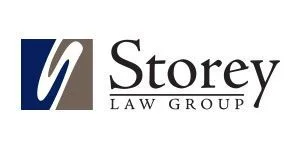Contact Us
Please fill out this short form.
Our Office
- posted: Mar. 11, 2021
One of the essential elements for a lender to prove in a mortgage foreclosure case is to show that all conditions precedent had been met, specifically, proving that the a lender sent a demand letter to the borrower in accordance with the terms of the mortgage. A typical mortgage contains a provision stating the demand letter will be deemed to have been given to the borrower when mailed by first class mail to the borrower’s notice address. This “presumption of delivery” is generally enough to overcome the common affirmative defense advanced by borrowers. Unfortunately, lenders can lose the presumption of delivery when there is an irregularity in the demand letter (eg. an incomplete address on the envelope), requiring the lender to prove that the letter was actually delivered.
Although industry practice and procedures for the mailing of demand letters has greatly improved since the height of the foreclosure craze, , demand letters sent during that time are still being used in ongoing litigation. For example, assume that the records for the lender reflect that the demand letter was sent via certified mail and first-class U.S. Mail, but the address on the demand letter contains a scrivener’s error. Instead of the address reading “582 Windswept Drive,” which is correct, the address on the demand letter reads “582 Wind.” Suddenly the presumption is gone, as the lender, according to its own records, did not send the demand letter to the notice address. Even though it was sent certified mail, unless the borrower signed the USPS green card acknowledging receipt, and the lender has retained a copy of the signed green card, the fact the lender sent it the letter via certified mail is of little help. If the certified mail was not claimed, a the United States Postal Service (“USPS”) data base displaying the status of certified mail will indicate that it was not delivered, but it may provide no guidance whether the delivery failed because the post office could not locate the address on the envelope or because the occupant refused to claim the certified mailing, or some other reason.
When confronted with a similar fact pattern, the Manager of our Foreclosure Department, Attorney Suzanne Delaney, herself a former attorney with the USPS, crafted a creative solution to prove the demand letter reached a borrower. The USPS uses a “geolocation” tool that allows letter carriers to scan each piece of certified mail at the time of an attempted delivery, and the tool scans the geographic coordinates of the delivery location. This means that, by subpoenaing the geolocation data, you can determine whether the delivery attempt was made at the correct location or not. Assuming it was, you can then subpoena a USPS witness to proffer testimony showing the demand letter was delivered to the correct address, despite a scrivener’s error in the address.
The process to secure this type of testimony is as follows:
1) 39 C.F.R. §265.12 establishing the procedures for subpoenaing testimony and documents from the USPS. You must submit your request for testimony and documents in writing, in particular in the form of an affidavit if possible;
2) Identify the records and/or nature of the request testimony. For example, in the fact pattern above, explain there is a mortgage with a notice requirement, and the borrower is disputing receiving the required notice. You should identify the property address and whatever tracking information you possess and explain you require testimony from a USPS employee that the defective address would not render the envelope undeliverable to the subject property;
3) Specifically request the stored “geolocation” data created on the date(s) the mail carrier attempted delivery;
4) Indicate the testimony/documents would be used to prove the mail carrier delivered the demand letter in compliance with the terms of the mortgage; and
5) Detail how the documents alone, without testimony, would be inadmissible as hearsay.
In addition to your written request above you must subpoena the General Counsel for the USPS, to be served at:
Designated US Postal Service Employee
c/o The Counsel, Office of the Chief Postal Inspector
475 L’Enfant Plaza SW
Washington, DC 20260-2101
A courtesy copy should also be mailed to the United States Post Office legal department located in Dallas Texas:
U.S. Postal Service, Legal Department - Dallas, TX
PO Box 75222
Dallas, TX 75222- 7078
Although the rules governing this process indicate only ten (10) days is required to serve the subpoena and secure testimony, the real-world logistical limitations (the DC office must connect with the Dallas office, which will then assign an attorney and contact the requesting party, etc.) regarding this process means you should make the request for testimony/documents and complete service of the subpoena no less than thirty (30) days prior to the date you require testimony. Ideally you should subpoena the records well in advance of any deposition or trial to avoid any surprises. The above described process is not limited to lender-centric litigation and can be used anytime counsel needs to prove delivery of a certified letter and can be a valuable tool in securing a final judgment or a more favorable settlement.
If you have a situation where you require the above described testimony and documents, Storey Law Group would be happy to assist. Please contact Suzanne Delaney at [email protected] to discuss how we can be of assistance.


